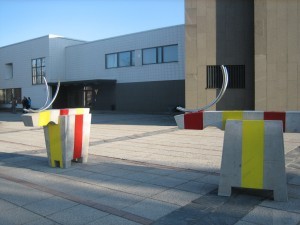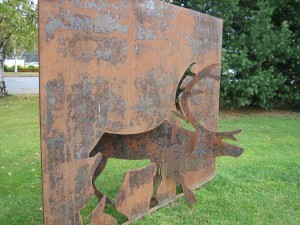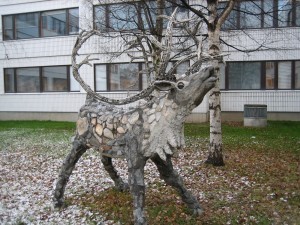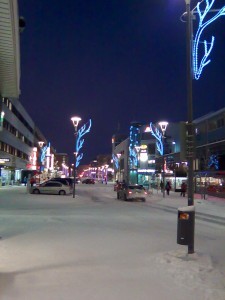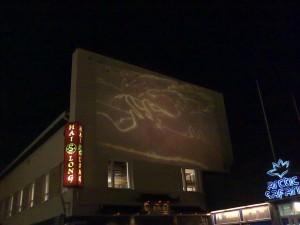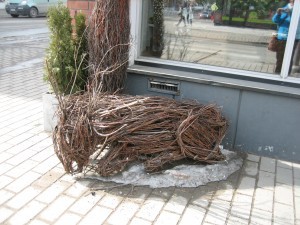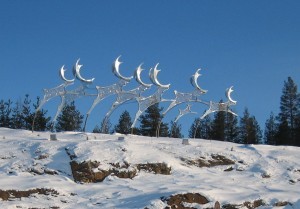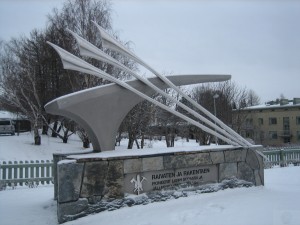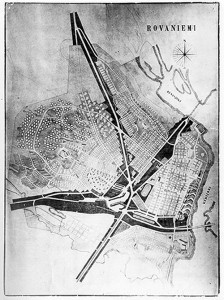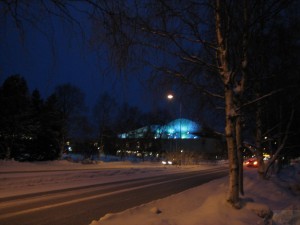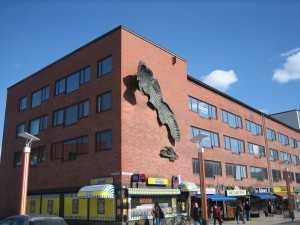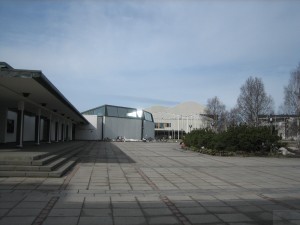 In the city of Rovaniemi they have in the year 2010 gathered a file of reindeer (pororaito) in the park area outside the administrative center with the library and the Lappia house, and also inside the center. The file of reindeer consists of five pieces of art in forms of reindeer and they are spread very nicely all over the park. Everyone of them is unique and perfect in its own way. I, myself, has many times visited the park in different seasons of the year and I never stop admiring the beauty of these pieces of art.
In the city of Rovaniemi they have in the year 2010 gathered a file of reindeer (pororaito) in the park area outside the administrative center with the library and the Lappia house, and also inside the center. The file of reindeer consists of five pieces of art in forms of reindeer and they are spread very nicely all over the park. Everyone of them is unique and perfect in its own way. I, myself, has many times visited the park in different seasons of the year and I never stop admiring the beauty of these pieces of art.
They first one of the five art pieces you may notice as you drive by the park are the two statues of reindeer standing by the road. The artist Tom Engblom explains why he has chosen to name the work: “Are we standing in the way?” He explains the reindeer are usually seen in the forests but also very often, too often, they are seen on the roads and unfortunately many of them are killed by cars as they usually move around in the evenings after sun set or during the period of kaamos, the Polar night, in winter. So Tom Engblom says that usually these creatures are actually “in the way”. There is two different reindeer, one is a female reindeer – a doe – and one is a male reindeer – a bull. The statues are made of cement ant colored in the same color as the traffic obstacles found all over the city, the “betoniporsaat”, and that makes the meaning “are we in the way” even more interesting.
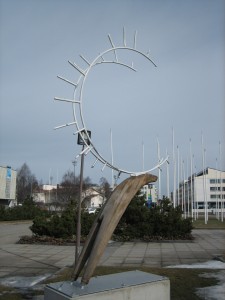 The next piece in the file of reindeer is “A Bounce” that stands near the door to the library. The Lappish artist Teuvo Tuomivaara has made the statue out of wood and steel. The statue is of course a reindeer, but you can also imagine the antlers to describe sunbeams.
The next piece in the file of reindeer is “A Bounce” that stands near the door to the library. The Lappish artist Teuvo Tuomivaara has made the statue out of wood and steel. The statue is of course a reindeer, but you can also imagine the antlers to describe sunbeams.
The piece of art “Marsh to out” is made by Risto Immonen of plain steel. There is a two-dimensional expression as the reindeer so to say walks out from itself and there is only the hole left. As you look at the sculpture from different angles you see the movement and the sculpture changes into different shapes. The piece of steel weighs about 600 kg and is 200 x 250 cm big. It is not made of stainless steel, so the sculpture will change during time due to the corrosion of rust.
Behind the administrative center, in a narrow corner on the back yard stands a reindeer statue made of Sauli Miettunen. The name of the art piece is “Part of Nature” and it is made of cement, pieces of stones, concrete material and steel. The reindeer has really large antlers in form of a big tree and stands in a position as if it has been scared by a car or so.
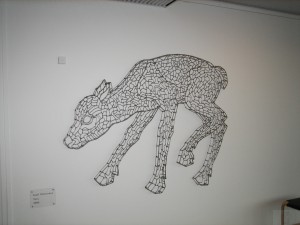 Sauli Miettunen has also created the sculpture, “The calf” on the wall inside the Administrative center. It is made of stainless steel all over and consists of two different structures that make the calf look like it is moving as you watch it from different angles. Very beautiful. Sauli Miettunen describes his works: Everything is part of nature: the trees, the stones and the animals.
Sauli Miettunen has also created the sculpture, “The calf” on the wall inside the Administrative center. It is made of stainless steel all over and consists of two different structures that make the calf look like it is moving as you watch it from different angles. Very beautiful. Sauli Miettunen describes his works: Everything is part of nature: the trees, the stones and the animals.
In addition there are a number of other objects that show the influence reindeer herding has had on Rovaniemi and Lapland all over the city of Rovaniemi. Here are some examples:

